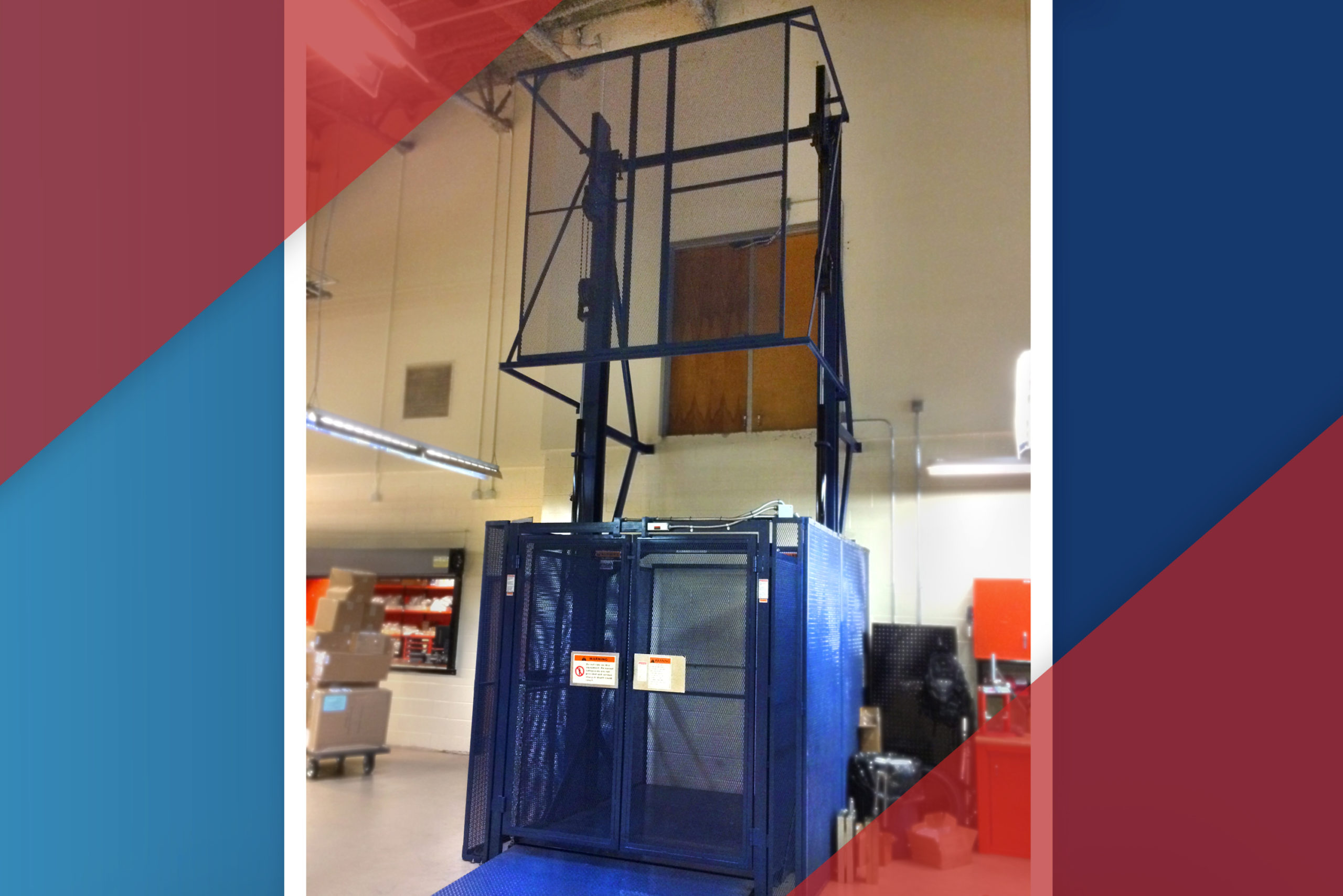What Are Vertical Reciprocating Conveyors (VRCs)?

Vertical Reciprocating Conveyors (VRCs) are defined as “a reciprocating (alternating up and down) power or gravity actuated lift that receives objects or material only (not designed to carry passengers or an operator) onto a carrier and then transmits these objects vertically between two or more fixed elevations.” They are designed to safely move cargo, equipment, or supplies from one level to another.
VRCs are an ideal lifting solution in applications where materials must be transferred vertically to a mezzanine or upper-level storage area in warehouses, manufacturing facilities, sporting and concert venues, and distribution centers. These lifts are an economical alternative to expensive freight elevators or fork trucks.
Autoquip VRC Material Lifts can be customized to improve freight and goods transfer and storage in any application including industrial mezzanines, retail stores, restaurants, warehouses, conveyor systems, and much more. Designated specifically for material handling, VRCs cannot be used to transport people.
Why Choose An Autoquip VRC?
In addition to convenience and flexibility, Autoquip VRCs deliver other important features and benefits that make them the smart choice:
- Reliable movement of high-capacity freight between mezzanine levels or floors
- Can operate using a small footprint if required
- Enables quick and efficient access to product inventory
- Creates a safer work environment by meeting or exceeding ASME B20.1 safety requirements
- Available in hydraulic and mechanical models
- Designed with our intelligent control panel system which streamlines your operation
- Can be integrated with legacy equipment
- Provides greater functionality and safer operation than forklifts
- Able to accommodate precision positioning requirements
- Durable, versatile, and simple to install
- Cost-effective; generates a quick return on your investment
Autoquip Transforms Ideas Into Reality
Our product library features several standard lift models, but some cases require us to go beyond the standard designs in order to find the best solution. Using our decades of experience, Autoquip can customize and build a VRC for your business based on the specific requirements of your industry, application, and worksite. We can also configure single or multiple VRCs to integrate with your existing equipment to create a seamless and economical material handling workflow.
The process begins with our team gaining a detailed understanding of your goals and specifications. We use that information to define the scope of work and create a quote. Upon approval of the quote, we will begin designing and manufacturing your custom lift. We bring our 75 years of experience to every project, ensuring your satisfaction with every phase of the process.
Are you concerned about overhead restrictions, limited floor space, unusual travel requirements, or extremely heavy loads? Give us your wish list, and let our custom engineering team create a design that gets the job done!
We’ve Upgraded VRC Lift Performance With Technology
Autoquip is helping customers get the most out of their VRCs with our AQ Connect Smart Controls System. This intelligent control panel allows your lift to generate safety alerts, perform diagnostics, and execute programmable tasks. Manage downtime and productivity effortlessly using the remote monitoring, reporting, and communication features. AQ Connect, a standard feature on all of our VRCs, is the complete solution for maximizing lift operation and performance.
Ready to Learn More?
The Autoquip team has extensive knowledge designing and implementing VRCs, as demonstrated in the various case studies on our website. These success stories provide insights into some of our customer’s most unique challenges and how we worked together to overcome them.
Whether standard or custom, simple or complex, our expert sales and design teams can help you select the best VRC option for your business. Take the first step towards a new level of efficiency by reaching out to us for a free quote today!